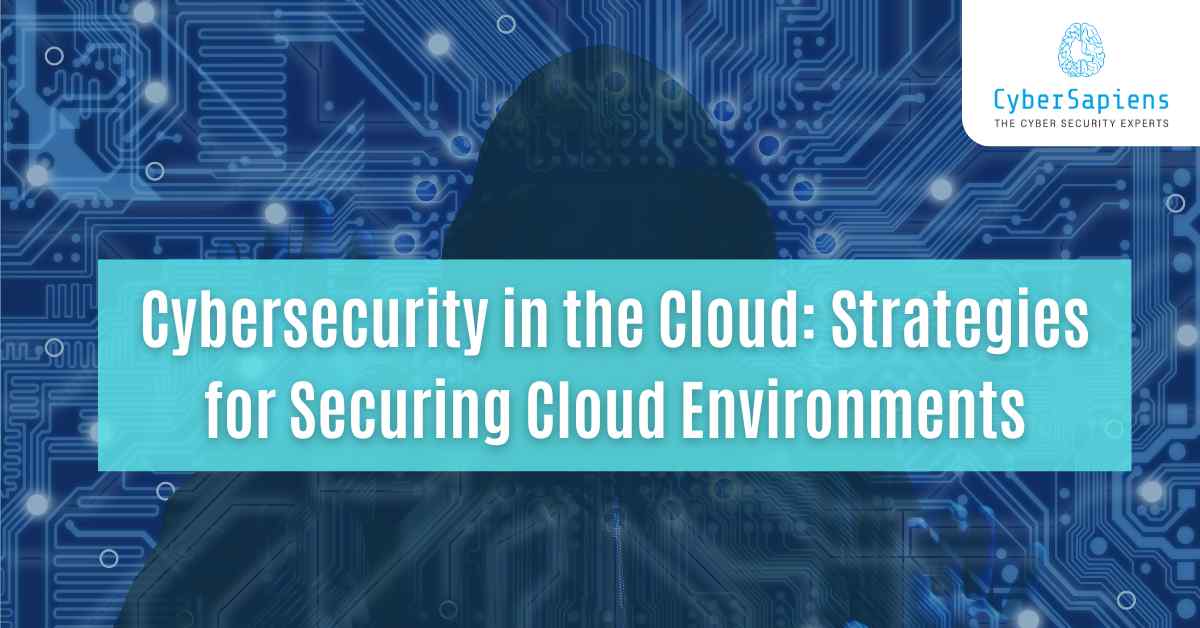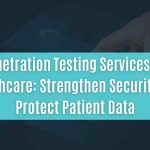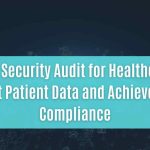Cloud computing has become such an important phenomenon in the functioning of companies and organizations today owing to the scalability, flexibility and cost-effectiveness it brings. Yet, these advantages are not without a dire impact on the institution’s cybersecurity.
This is because as organizations demand more cloud services the security of the cloud environments becomes an important factor. The work aims at looking at the strategies of Cloud security, and practical measures that are in place to secure cloud environments.
In this article we are going to explore Cybersecurity in the Cloud: Strategies for Securing Cloud Environments:
Understanding Cloud Security Challenges
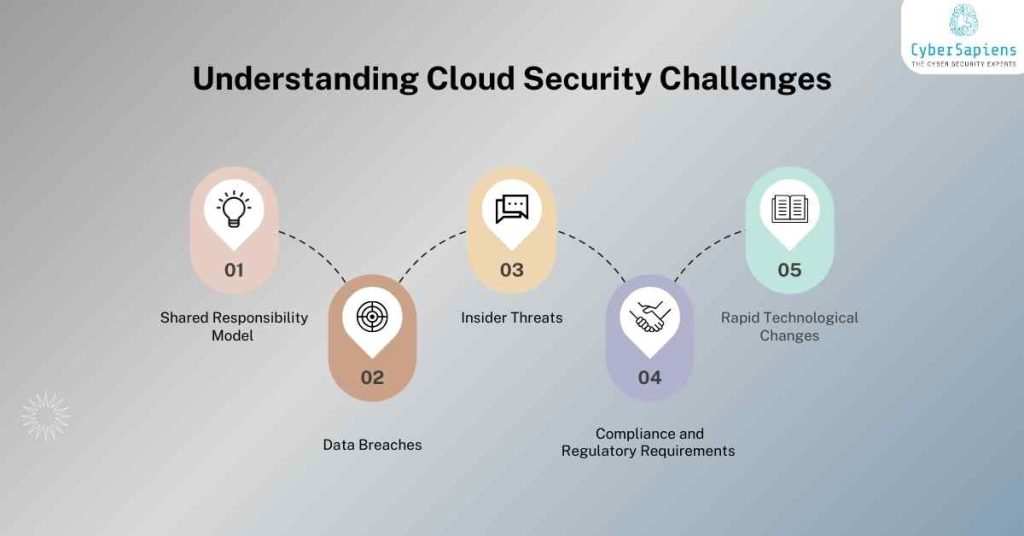
Before diving into specific strategies, it’s essential to understand the unique challenges associated with cloud security. Cloud environments are complex and dynamic, involving multiple stakeholders, technologies, and processes. Some of the primary challenges include:
1. Shared Responsibility Model
It defines security approaches in clouds and explains that the security of cloud services is a joint responsibility of the cloud service provider and the customer. CSPs ensure cloud control whereas the customers are supposed to secure their data, applications and configurations in the cloud.
2. Data Breaches
Data breaches are much more likely in the cloud since data is managed centrally and misconfigurations are much more common. There are severe penalties that organizations suffer if their data gets into the wrong hands; they include hefty fines, destroyed reputation, and many more.
3. Insider Threats
LBI is another major threat that insiders pose to cloud protection, including both intentional and unintentional ones. People who work in organizations can be a weak link in an organization’s security because they can either unknowingly or maliciously threaten an organization’s security.

4. Compliance and Regulatory Requirements
Businesses have to follow many legal policies as well as regulatory frameworks and those are not easy to follow in the cloud surroundings. Measures for compliance with legal requirements, for example, GDPR, HIPAA, or PCI-DSS are stringently protected and monitored.
5. Rapid Technological Changes
The cloud environment has been rapidly growing and so have its services, features and even threats in the contemporary world. Such changes are so frequent that the maintenance of them and the corresponding security measures are fairly challenging.
Top 3 Main Importance of Cybersecurity in the Cloud
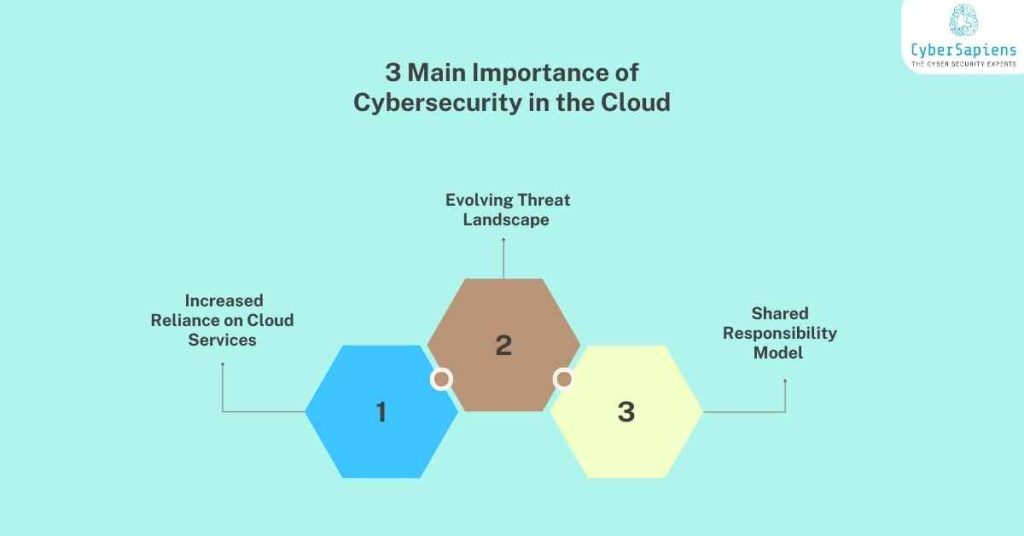
The cloud offers many benefits for businesses, but it also creates new security risks. Cloud data breaches can be devastating, leading to financial losses, reputational damage, and regulatory fines.
Here are some of the reasons why cybersecurity is so important in the cloud:
1. Increased Reliance on Cloud Services
Companies are adopting cloud services to store a growing number of proprietary records, including customer records, financial records and information, and other proprietary assets. That made them rather exposed to cyber threats in case security was not strengthened at the right level.
2. Evolving Threat Landscape
They are always coming up with new ways by which to take advantage of various weaknesses of the cloud infrastructures. Therefore, one has to be aware of new threats and properly protect against them.
3. Shared Responsibility Model
Since multiple entities are involved in managing the cloud environment under this model, there might be confusion about who is supposed to secure what aspect of the setup. This results in confusion and, in some areas, some gaps can lead to insecurity.
Top 6 Best Strategies for Securing Cloud Environments

Here comes our main topic, In these challenges, organizations must adopt a comprehensive approach to cloud security. The following strategies can help organizations secure their cloud environments effectively:
1. Implement Strong Access Controls
A primary part of security in Cloud Computing is access control. Companies or organizations should use their controls in a cloud environment to ensure that only people who are permitted will have access to the resources in the said environment. Key practices include:
a. Multi-Factor Authentication (MFA)
MFA increases protection by detecting multiple credentials (e.g., a password and an OTP) before granting access to the cloud resources. This minimizes the vulnerability of a system being invaded through an account that has had its password cracked.
b. Role-Based Access Control (RBAC)
RBAC approaches to control access to the cloud resources with variations depending on the users’ roles. When setting the permissions for the users, organizations should implement permissions that reflect the user roles and responsibilities and hence, eliminate the insiders who have access to the system beyond their duties.

c. Least Privilege Principle
Also, this principle involves providing users with the level of access that is required by them to accomplish their functions. Thus, following the least privilege principle will help minimize the exposure in case of a security incident and limit the offenders’ actions.
2. Encrypt Data at Rest and in Transit
Another critical activity used to safeguard information in the cloud is the encryption of the data to be stored. Organizations should also apply data encryption to the data that is stored in the system as well as the data that is being transmitted across the network. Key practices include:
a. Encryption at Rest
Encrypt data that is to be stored in cloud computing services using the best Encryption Algorithms. This makes sure that if the storage medium is ever lost or deposited in public somewhere, the data is encrypted and will be difficult to read if not decrypted with the key.
b. Encryption in Transit
Use TLS to encrypt the data exchanged between the users and their cloud services and applications at the transport layer. This eliminates evils like eavesdropping and man-in-the-middle attacks.
c. Key Management
Key management plays a critical role in encryption and thus needs to be done perfectly. Employees should be especially careful when using keys; they should be stored in Hardware Security Modules or urgently replaced.
3. Monitor and Audit Cloud Activities
Security exercises ought to be done constantly, with active monitoring and audit checking of cloud activities for any security violation. Organisations need to have proper monitoring and auditing of the cloud environment. Key practices include:
a. Security Information and Event Management (SIEM)
SIEM solutions assimilate some data that is security-related in nature and offer real-time feeds over probable malevolence. SIEM allows for the identification of events and generating of alerts allowing an organisation to identify a security incident and respond immediately.
b. Cloud Access Security Brokers (CASBs)
CASBs are used for analysis of the Cloud activity patterns and Cloud usage to ensure Cloud activity is per security measures. CASBs are also capable of identifying and mitigating high-risk activities, prevent or controlling the violation of organizational policies and generating a rich set of audit trails.
c. Audit Logs
Keep detailed records of all cloud actions performed on cloud services, such as access credentials, protocols, and communications activity. It is good practice to examine these log files periodically to find out any unusual occurrences and or suspicious activities as well as check for compliance with the set regulatory standards.
4. Secure Cloud Configurations
Some of the most frequently reported cases of security issues in the cloud stem from misconfigurations. As part of security practices that organizations should undertake to avoid misconfigurations, organizations should develop sound practices in cloud configuration and regularly scan for them. Key practices include:
a. Configuration Management Tools
Implement the security policies by utilizing automated configuration management systems that provide a standard configuration that can be utilized on computers in cloud environments. These tools can help the unconscious misconfigurations be pointed out and corrected on the fly.
b. Regular Configuration Audits
Practice audits for cloud configurations to find out the possible security vulnerabilities in the cloud. Recommended checks and procedures that should be incorporated in audits are checking on matters concerning access rights, TCP/ IP settings, and data security.
c. Baseline Configurations
Set default deployment for the cloud resources; guarantee that all the deployments are aligned to the default setting. Any difference from the baseline has to be an alert and initiate a corrective action.
5. Implement Network Security Measures
Data security is crucial in the cloud, especially regarding access to data which is why network traffic must be protected. Network security should be followed to protect the organizations’ clouds. Key practices include:
a. Virtual Private Cloud (VPC)
Utilize Virtual Private Clouds to design secure networks in the cloud services. VPCs assist organizations in dividing their acquired cloud resources and managing traffic flow across a business’s network using security groups and network ACLs.
b. Firewalls
Utilize solutions like cloud-based firewalls to check the incoming and outgoing network traffic with policies that enforce selective security rules. These firewalls prevent suspicious traffic from getting in and also deny unauthorised access to the cloud assets.
c. Intrusion Detection and Prevention Systems (IDPS)
The IDPS solutions should be adopted as ways of identifying and combating threats that are based on networking. By using the information provided to it by an IDPS, it is possible to detect various activities like violating attempted accesses and malware attacks and respond to them in one or the other way.
6. Educate and Train Employees
Account errors are a prevalent cause of cyber insecurity in the cloud computing environment. Therefore, the training and sensitization of personnel working in organizations that use cloud computing on how to prevent security threats can help minimize these risks. Key practices include:
a. Security Awareness Training
It is recommended that one or more security awareness training should be conducted from time to time to make employees aware of likely threats like phishing or social engineering. Correct protections of the cloud resources as well as correct procedures of how to handle sensitive data should also be included in the training program.
b. Role-Specific Training
Educate the employees according to the role and the permissions granted in order to perform their functions. Thus, the developers shall undergo training in secure coding practices while the administrators shall be trained in secure configuration management practices.
c. Phishing Simulations
Run phishing tests before to determine the susceptibility of the employees, in terms of falling prey to phishing attacks. Such simulations can be useful in determining the strengths and weaknesses of a certain course of action, as well as educating the organization’s employees and members that complacency is dangerous.
Useful Resources:
Here are some useful resources related to cloud security:
- Difference Between Cloud Security and Cyber Security
- Top 50 Best Penetration Testing Tools
- Top Cybersecurity Threats of 2024
- The Role of Artificial Intelligence in Cybersecurity 2024
Conclusion
Thus, cloud computing has several advantages for businesses being at the same time a source of new risks. When the overall model of the current state of responsibility, the right security approaches, and the actions identified in this guide are adopted and applied effectively, your cloud will be safe and your data protected.
Remember that cloud security is not a one-time event. That is why one needs to systematically check one’s cloud environment for security threats and risks and modify the existing security measures where necessary.
FAQs: Cybersecurity in the Cloud
1. Is my data more secure in the cloud than on-premises?
Ans: There’s no simple answer. Cloud providers invest heavily in security infrastructure, but traditional on-premises setups offer more direct control. The key is understanding the cloud provider’s security measures and implementing strong security practices yourself.
2. Who is responsible for securing my data in the cloud?
Ans: It’s a shared responsibility! The cloud provider secures the underlying infrastructure, while you’re responsible for securing your data and applications within the cloud environment.
3. What are some common cloud security threats?
Ans: The common cloud security threats are:
1. Data breaches,
2. unauthorised access,
3. malware attacks
4. misconfigurations are all major concerns.
4. What’s the deal with multi-factor authentication (MFA)?
Ans: MFA adds an extra layer of security by requiring two or more factors (like a password and a code from your phone) to access your cloud accounts.
5. How can I encrypt my data in the cloud?
Ans: Most cloud providers offer data encryption options, both at rest (when stored) and in transit (during transfer).
6. What if there’s a security incident in the cloud?
Ans: Having an incident response plan is crucial. This plan outlines steps to identify, contain, investigate, eradicate, and recover from a security breach.
7. Should I be worried about my employees accidentally exposing data in the cloud?
Ans: Absolutely! Training your employees on cloud security best practices is essential to prevent accidental data leaks or misuse of cloud services.
8. How can I stay updated on the latest cloud security threats?
Ans: Many cloud providers offer security advisories, and reputable cybersecurity resources publish ongoing threat reports.
9. What are some best practices for securing my cloud environment?
Ans: Use strong passwords with MFA, follow the principle of least privilege (granting minimal access permissions), and regularly back up your data.
10. Is cloud security a one-time thing?
Ans: Not at all! Cloud security is an ongoing process. Regularly monitor your environment, patch vulnerabilities, and adapt your security controls as needed.


